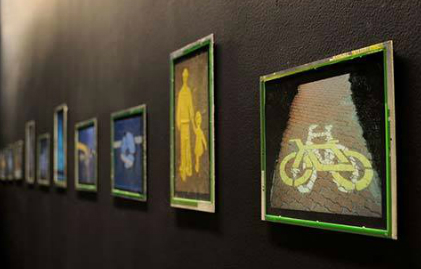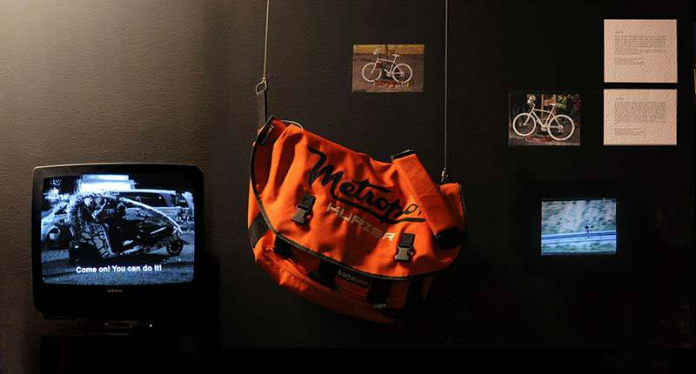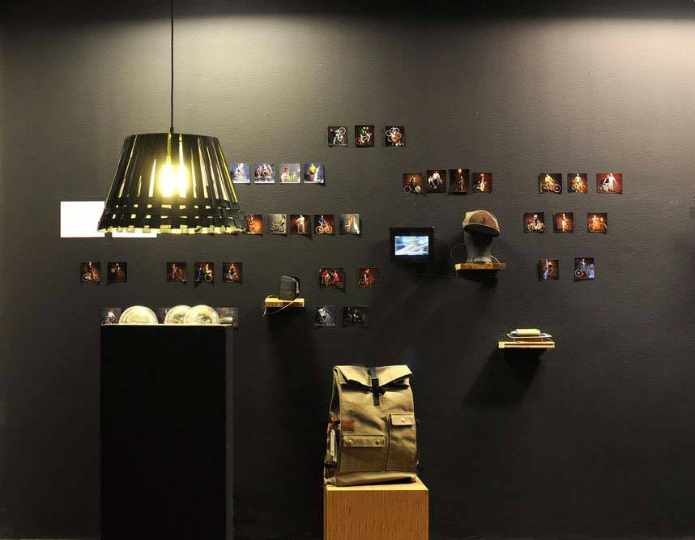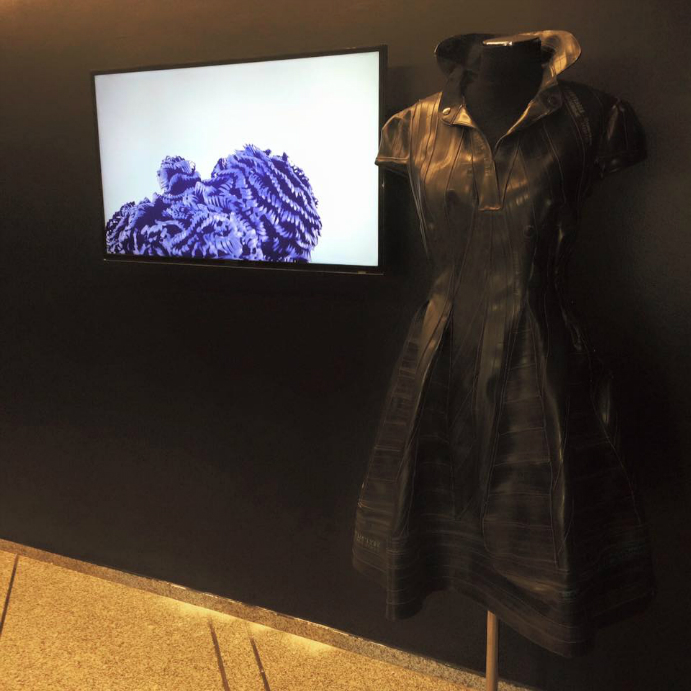Velofetish
EXHIBITION
Cyclists suit Budapest and Budapest suits the cyclists. An exhibition in Macar Kültür Merkezi (Istanbul) from Hungarian bike-culture. SPEECH.
| Frazon Zsófia |
2015-06-17 13:00 |
„I go down to have a ride on my bicycle.” I said this to my mother when I finished learning in the afternoon and had nothing else to do, and the weather was fine. Cycling was a hobby. It was a way of spending my free time. And it was also a way of wandering around. I did not use to go to school or to the shop by bicycle, but if I had some time I often went cycling. This usually meant circling around the neighbourhood, among the buildings, in the park, on the playground, I jumped on the pavement, and was spinning crazily or slowly as I wished. I grew up in a small town there weren’t hills and still I did not use my bike on a daily basis. I only went down to ride my bicycle as a pastime. It was something like skateboarding today.
 In Hungary there are towns where cycling is a dominant form of getting around. People go to work, to school, to the shops, to their allotments or to visit their relatives on their bicycles. Both the young and the elderly. For them cycling is a daily routine, just another thing they do every day. And there are towns where this has gone for a long time. These towns have transformed, and during this, cycling has dropped out of the reasonable options. Budapest used to be such a place. Did the distances become too long as the city was sprawling? Did the river Danube split the city into two? Did public transport network finally cover the entire city and became dominant? If there was a rank of cycling friendly cities in Europe, Budapest was certainly not in a top position in this. There were some brave people, but cycling was widely regarded as bold and foolhardy. Most of the riders were either couriers or weekend cyclists on their way out of the city for an excursion. High-tech, purpose-made garment on the former, tracking suit on the latter. Budapest did not see cyclists in suits and ties, mini-skirts, high-heels or teenagers with rucksacks on their way to school. Women on bicycles with shopping baskets or with child bike seats were non-existent.
In Hungary there are towns where cycling is a dominant form of getting around. People go to work, to school, to the shops, to their allotments or to visit their relatives on their bicycles. Both the young and the elderly. For them cycling is a daily routine, just another thing they do every day. And there are towns where this has gone for a long time. These towns have transformed, and during this, cycling has dropped out of the reasonable options. Budapest used to be such a place. Did the distances become too long as the city was sprawling? Did the river Danube split the city into two? Did public transport network finally cover the entire city and became dominant? If there was a rank of cycling friendly cities in Europe, Budapest was certainly not in a top position in this. There were some brave people, but cycling was widely regarded as bold and foolhardy. Most of the riders were either couriers or weekend cyclists on their way out of the city for an excursion. High-tech, purpose-made garment on the former, tracking suit on the latter. Budapest did not see cyclists in suits and ties, mini-skirts, high-heels or teenagers with rucksacks on their way to school. Women on bicycles with shopping baskets or with child bike seats were non-existent.

Then came the critical mass, with far-reaching ambitions: „Every road is a bicycle road” and „Let’s make Budapest a cycling city”. And – however unbelievably it sounds - in a little more than a decade, thousands of people have become regular cyclists. Besides the colourful and sporty bike wear, now there is fashionable, casual, ordinary or even pretty clothing. And, of course, there are the activists: with signs and symbols, with the message. Because there is a lot of space for development, and in this, being pro-active is very important. But, finally, today it’s not only the brave and the bold who get on their bikes: today the sense of freedom and the sense of everydayness in cycling have become prevalent. And the more kinds the cyclists are on the roads, the freer and the faster the city is. The overall picture is getting more and more colourful: trendy women and men, mothers and fathers with their children, office workers and students and rickshaws with tourists. And again, the more cyclists there are, the safer the city is.

This is how a new layer of traffic and transportation is being shaped. And the members of this layer are not any more a sub-culture and not even the critical mass. They are everyday users of the city who negotiate more and more space for themselves on the roads, in the car parks near office buildings or in the backyards of the pubs. Cycling in Budapest is still an adventure, but it is an attractive one, it is good to be part of it, it’s good to shape and refine it. It is a great feeling to wait at the traffic light with many other cyclists, and when it turns green, it’s great to gain momentum, change the gear and proceed in the dedicated lane with the others. Just like in a real cycling city. Cyclists suit Budapest and Budapest suits the cyclists.

Velofetish Sergisi until 4 July; Curator: Füsun Ipek